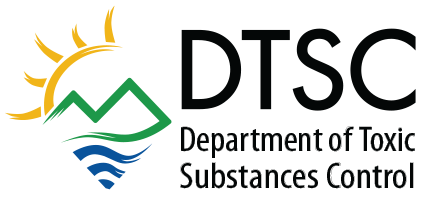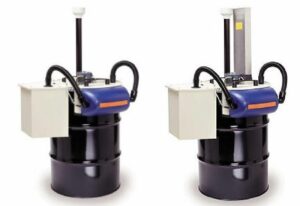Note: This web page is a part of DTSC's Mercury Lamp Disposal training course.
Collection and Recycling
The Dangers of Drumtop Crushers
Some sales people offer “drumtop crushers” designed to break waste mercury lamps into drums. The Department of Toxic Substances Control (DTSC) and the United States Environmental Protection Agency (U.S. EPA) recently studied the best drumtop crushers on the market and found that throughout their life cycle none could reliably minimize mercury exposure to the operator.
In the state of California, it is illegal to use drumtop crushers. It is also unsafe as they may seriously contaminate the areas in the building where the crushers are used.
To avoid exposing people to mercury poisoning and paying serious fines and penalties, do not use drumtop mercury lamp crushers in California.
Proper Collection and Recycling Methods
When a home or business owner accumulates a sufficient recycling quantity or reaches the one-year accumulation limit, the waste mercury lamps must be collected and transported to a recycling facility or another universal waste handler.
These are some of the key players in that process:
- Recycling facilities: These facilities accept waste mercury lamps and crush them. A number of recycling facilities are located throughout the United States, but only two are located in California.
- Mailing box programs: Many recycling facilities use mail-in boxes to collect waste mercury lamps. The recycler sells the box at a fixed price, which includes shipping costs. The customer fills the box with waste lamps and ships it back to the recycler.
- Lighting contractors: Large businesses often pay lighting contractors to replace all of the mercury lamps in their facilities every three to four years. This process is called relamping. The business and lighting contractor determine which party will send the waste mercury lamps to a recycling facility.
- Household hazardous waste collections: Household hazardous waste collections exist in nearly every area in California in one of two ways:
- Permanent establishments at the local transfer station or landfill
- Temporary pick-up sites
Household hazardous waste collections accept all types of household hazardous waste, including waste mercury lamps, to keep hazardous waste out of landfills. Household hazardous waste collections may also accept hazardous waste from very small businesses. While most facilities charge a fee for accepting business hazardous waste, household hazardous waste is free. For more information, please visit CalRecycle’s Household Hazardous Waste web page. For additional information on household hazardous waste collection dates and locations, please call your local city or county public works or environmental health department.
- Take back programs: Some businesses that sell mercury lamps have “take back” programs through which the businesses selling new lamps will also take back and recycle waste lamps. Retailers often have compact fluorescent light take back programs which exclude fluorescent tubes which are considered commercial sale items.
- Lamp crushing facilities: These facilities collect waste mercury lamps from handlers, lighting contractors, household hazardous waste collection agencies, and commercial waste lamp collection and accumulation firms, and use sophisticated enclosed equipment to safely crush the lamps into metal drums for recycling.
- Lamp management firms: Lamp management firms collect mercury lamps from businesses and ship them to lamp recycling facilities. Many lamp recycling facilities also operate lamp pickup operations.
- Mercury retorting facilities: Mercury retorting facilities take drums of crushed lamps and boxes of whole lamps and heat them in large vessels called retorts. The mercury vaporizes out of the crushed lamps and condenses into new metallic mercury. It is then used to make new mercury lamps.
Mercury lamp recycling separates a number of materials for further use in new products.
- The mercury is reused in new lamps and other mercury devices.
- The glass is recycled into new lamps and other glass products.
- The aluminum end caps are shipped to an aluminum smelter to be transformed into new aluminum billets for making a variety of products.
- The phosphor powders that turn ultraviolet light into visible light are separated and cleaned for reuse in new lamps.
For questions about content, please contact the Regulatory Assistance Officers at (800) 72-TOXIC (800-728-6942) or go to the Regulatory Assistance Office web page.
Mercury Lamp Disposal Links
Connect / Contact Us
Office Locations / Map
Sign up for an E-List
Regulatory Assistance Officers
Statewide Campaigns/Alerts
Report an Environmental Concern
Amber Alert
California Grants Portal
Register to Vote
Save Our Water.com




 Katherine M. Butler, MPH
Katherine M. Butler, MPH